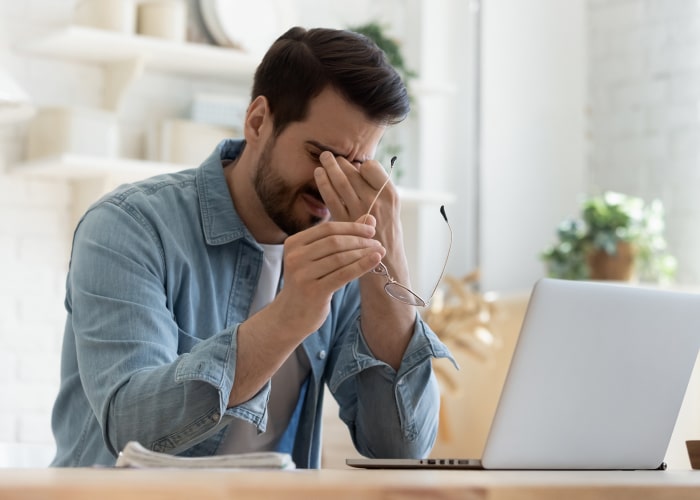
Dry Eye Treatment
Are you tired of the persistent eye irritation caused by dry eye? Help is at hand with our dry eye treatments.
Causes of dry eye
Dry eye can affect anyone and can be triggered by:
- Too much digital screen time
- Air-conditioned environments
- Certain medications
- Autoimmune conditions
- Age-related changes
- Contact lens wear
- Environmental factors such as wind and low humidity
It is caused by the tears that lubricate your eyes drying up (evaporating) too quickly due to poor-quality tears. Alternatively, it can be caused by an insufficient amount of tears being produced.
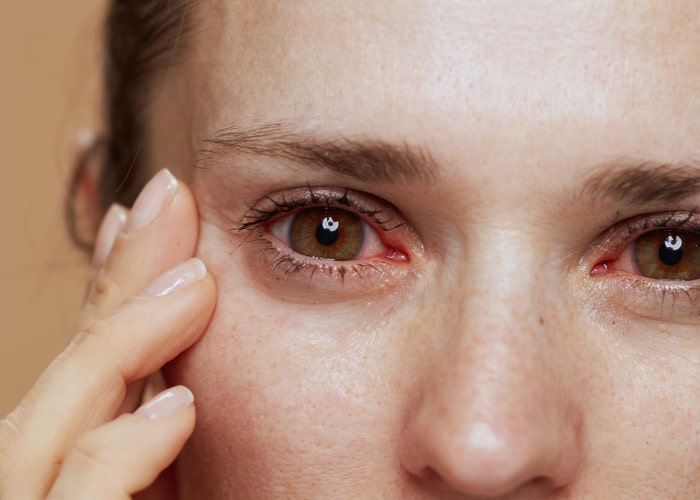
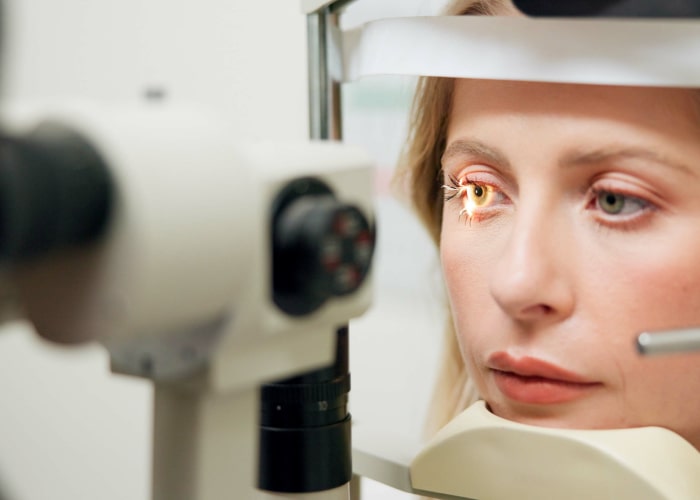
Symptoms of dry eye
Your eyes are delicate ecosystems and if they start to dry out, you may notice:
- A persistent scratchy or gritty sensation
- A burning or stinging feeling
- Watery eyes (as your body’s response to dry eyes)
- Blurred vision
- Sensitivity to light
- Eye fatigue
- Difficulty wearing contact lenses
- Mucus around your eyes.
If you spot one or more of these symptoms and any of the risk factors sound familiar, you could have dry eye.
Comprehensive Dry Eye Assessment
Our comprehensive dry eye assessment includes:
- History and symptoms discussion: To determine the onset and type of symptoms, any triggers, and risk factors. This includes the OSDI dry eye questionnaire, which is used extensively in research and clinical settings.
- Advanced diagnostic testing using MYAH: Our specialist MYAH machine has a suite of tools specifically designed to investigate the cause and type of dry eye. These are all painless and only take a short time to perform. This includes:
- Meibography: The Meibomian glands produce the oily layer on top of the eye to stop tears from evaporating. MYAH uses infrared light to show whether any of these glands are blocked or have reduced function.
- Tear Break-Up Time (TBUT): Assesses how long tears stay in the eye before evaporating.
- Tear Prism Height (TPH): Measures tear volume.
- Inter-blink Interval: Assesses individual blink rate.
- Examination of the front of the eye: Evaluates the eyelids, tear-producing glands, and the front surface of the eye for any signs of damage.
Once the examination is complete, we will discuss the type and severity of your dry eye and agree on a personalised treatment plan.
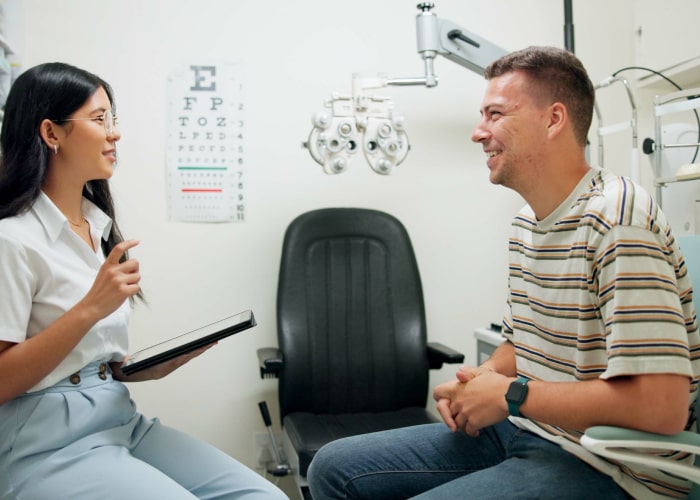
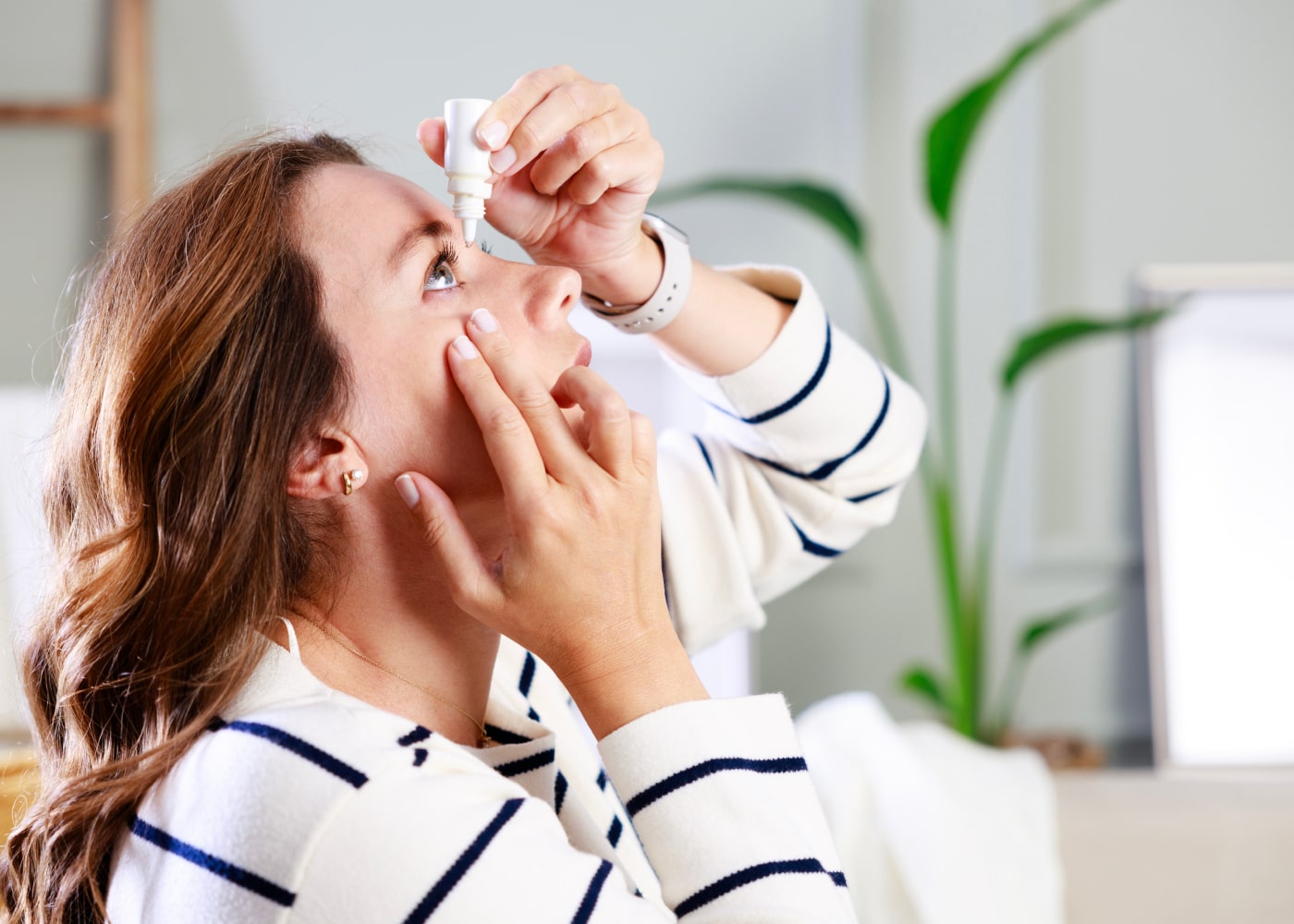
Treating dry eye
Dry eye can feel like a nightmare, but there is relief. We offer a range of treatment options tailored to your needs, including:
- Punctal plugging: Tiny plugs are placed in the tear drainage canals to help conserve tears.
- Meibomian gland expression: A technique to unblock your Meibomian glands.
- Eye masks: Helps soothe your eyes and improve oil gland function.
- Lubricating drops and ointments: Helps hydrate and protect your eyes.
- Eyelid cleansers: Keeps your eyelids free from dust and debris, preventing gland blockages.
- Environmental and dietary modifications: Lifestyle adjustments to reduce symptoms.
- Lid hygiene routines: Helps maintain optimal eye health.
- Referral to an eye clinic if necessary.
Dry Eye Questionnaire
If you think you might have dry eye, please complete the DEQ-5 dry eye screening questionnaire. If your score is 6 or above or you experience any dry eye symptoms, please contact us to book a full dry eye assessment
Book your appointment today
With our dry eye treatments, you can overcome irritated, uncomfortable eyes. Reclaim comfort and clarity by requesting your dry eye assessment today.
